Houghton Boulders???????
Cache Summary: On the southeast side of Houghton EarthCache visitors are able to find a variety of boulders that have been left behind long ago by melting glaciers. Some of these boulders are examples of local rocks and some are ‘strangers’ to the area, carried here from far away. Visitors will learn how this diverse group of boulders came to rest at this site and will be able to distinguish between ‘locals’ rocks and those that are ‘strangers’.
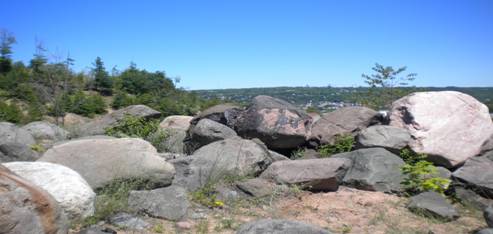
Figure 1. Outwash Boulder Pile near Houghton. Photo: Lucy Korpi
Coordinates: N 47° 06.558, W 88°35.560
Cache Description:
How could such a large variety of boulders come to be piled together in this spot?
Step 1: The formation of local rocks
The geologic history of this area began about 1.1 billion years ago when the midcontinental rift formed and threatened to split apart the continent. This rifting caused volcanic activity and erupted many thick lava flows over a period of a few million years. These lava flows cooled and hardened into an igneous rock called basalt. Basalt is formed when lava cools above ground, and because it cools quickly it usually does not have many crystals. Basalt is usually dark in color and ranges from black to greenish-grey, but can also be dark rusty brown. The local basalts have three main distinctive varieties depending on the cooling history- amygdaloidal, massive, and ophitic- each distinguished by various characteristics. See the images and captions below for information on their distinguishing characteristics.
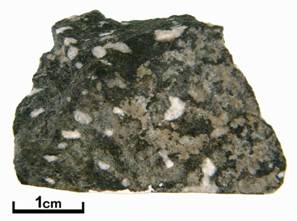
Figure 2. Amygdaloidal basalt: Basalt that started out as vesicular, but whose holes were later filled in by minerals. Source: geology.about.com/od/more_igrocks/.../basalt/basaltamygs.html
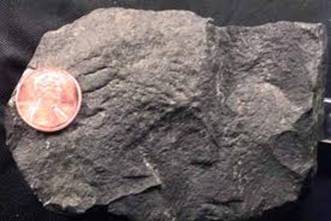
Figure 3. Massive basalt: Any solid piece of basalt without crystals, bubbles, or other extras. Source:http://csmres.jmu.edu/geollab/fichter/IgnRx/HTMLimag/Basalt-1A1.62.JPG

Figure 4. Ophitic basalt: This type of basalt looks like it has been painted with lots of little lighter colored star-burst patterns. These patterns are actually groups of feldspar crystals, and are evidence that this type of basalt actually cooled in the middle of a very thick lava flow. Photo: K. Brill
During the rifting period, there were quiet times with few lava eruptions. During these periods erosion and deposition was prominent forces. Gravel, cobbles, sand and mud began to fill the rift basin. Later these sediments became buried and formed two locally common types of sedimentary rocks- the Jacobsville Sandstone and the Copper Harbor Conglomerate. These rocks also have very distinctive characteristics which make them easy to distinguish.
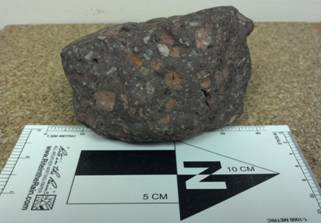
Figure 5. Copper Harbor Conglomerate: A reddish conglomerate rock consisting of a mixture of various sized rock particles. Photo: K. Brill
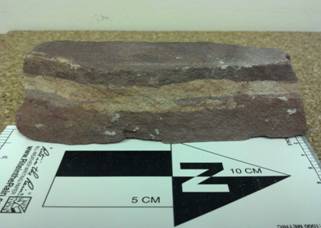
Figure 6.Jacobsville Sandstone: A reddish sedimentary rocks made of mostly sand-sized grains cemented together with occasional light-colored streaks and spots. Photo: K. Brill
Step 2: Glacial Erosion and Deposition
A continental collision caused the midcontiental rift to suddenly stop. Over the next billion years the area became buried under layers of other sediments and rocks. About three million years ago, the Ice Age began and massive glaciers began to move southward, scraping away at rocks as they moved. Once again the local midcontinental rift rocks became exposed.
The large pile of glacial boulders found at this site is examples of glacial “erratics” left by the last glaciers to move through the area. These erratics are monuments to the power of these mile-thick glaciers to carve out erosional landforms and features as the result of abrasion and plucking of the underlying bedrock.
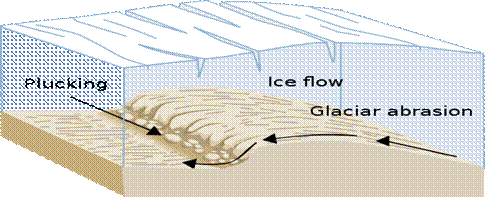
Figure 7. Glacial processes that add rocks and sediments to the ice as a glacier flows. Source: http://schools-wikipedia.org/images/739/73930.png.htm
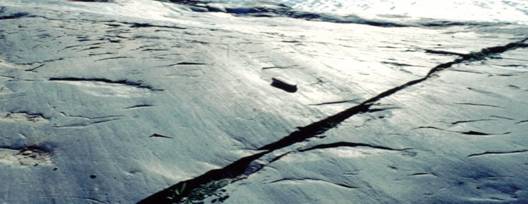
Figure 8. Rock polishing due to abrasion. Source:www.goggle.com/Glacialpolishing
Some of these boulders are strangers, unlike the local bedrock on which they are found. They are rocks that had been transported up to thousands of kilometers by flowing ice from the north. Others are local rocks like those described above and traveled much shorter distances.
As the glacial ice melted away, these boulders were deposited by enormous melt water flows, along with sand, gravel and any other materials caught within the glacier.
Step 3: Human Action
When this area was developed for commercial businesses during the last decade, the sand and gravel deposits were mined and used for buildings. This boulder pile was collected together when this was an active excavation site for sand and gravel.
The owner of this cache is a participant in the Michigan Teaching Excellence Program (MITEP) through Michigan Technological University, which teams with Michigan science teachers to improve science teaching and learning.
_____________________________________________________________________________________________________________________
Vocabulary
Abrasion is a process in which the rock debris carried by the glacier wears away the bedrock. The rock surfaces are polished smooth, scratched or ground down into a powder called rock flour.
Plucking is another form of glacial erosion. It involves the lifting and removal of large blocks of bedrock by the glacial ice. The action of freezing and thawing of the bedrock beneath the flowing glaciers loosens large boulder size blocks of rock. Frozen in the moving glacial ice, they too can polish, grind and groove the bedrock, like the file of an earth sculptor.
_____________________________________________________________________________________________________________________
Logging Your Visit
Question #1
Study the surface of these boulders. What evidence can you observe that indicates that they were transported to this location by the actions of glacial ice and not by the actions of running water?
Question #2
Use the information in the EarthCache description to identify examples of ‘local’ and ‘foreign’ boulders. Choose your favorite ‘stranger’ and describe it in detail. How can you tell its not from here?
Question #3
What is the relationship of this pile of glacial boulders to the nearby hillside that is the backdrop of this site?
_____________________________________________________________________________________________________________________
Common Earth Science Misconception: Some students may believe that massive rock boulders are too heavy & large to be lifted by ice, so they are rolled by the ice as it advances. They may believe that erratics are only located on the ground surface not realizing they are part of the mix of glacial materials below ground too.
_____________________________________________________________________________________________________________________
Earth Science Literacy Principles:
Big Idea 5.7Ice is an especially powerful agent of weathering and erosion
Glacial erratics are evidence of the force of glaciers to change the Earth’s surface. Products of the processes of weathering by abrasion and plucking, the glaciers erode and often deposit these stones great distances from their point of origin. Erratics with their foreign mineral compositions when compare to local bedrock are a testament to the work of glaciers, moving ice.
_____________________________________________________________________________________________________________________
References
Author Uncited. (2012). Outwash Boulders. http://www.geo.mtu.edu/~raman/SilverI/HoughtonEC/Boulders.html. Retrieved 8/1/12
Bevier, M.L. (2002) Thin Section Slide Show. http://www.eos.ubc.ca/course/eosc324/324. Retrieved 7/31/12
Brill. Kyle (2012). Photographer.
Dictionary (2003) Ophitic. www.thefreedictionary.com/ophitic. Retrieved 8/1/12
Glacier.(2012, August 7). In Wikipedia, The Free Encyclopedia. Retrieved 12:19, August 3 2012, fromhttp://en.wikipedia.org/w/index.php?title=Glacier&oldid=506250702
www.encyclopedia.com/topic/glaciations.aspt . Retrieved 7/31/12